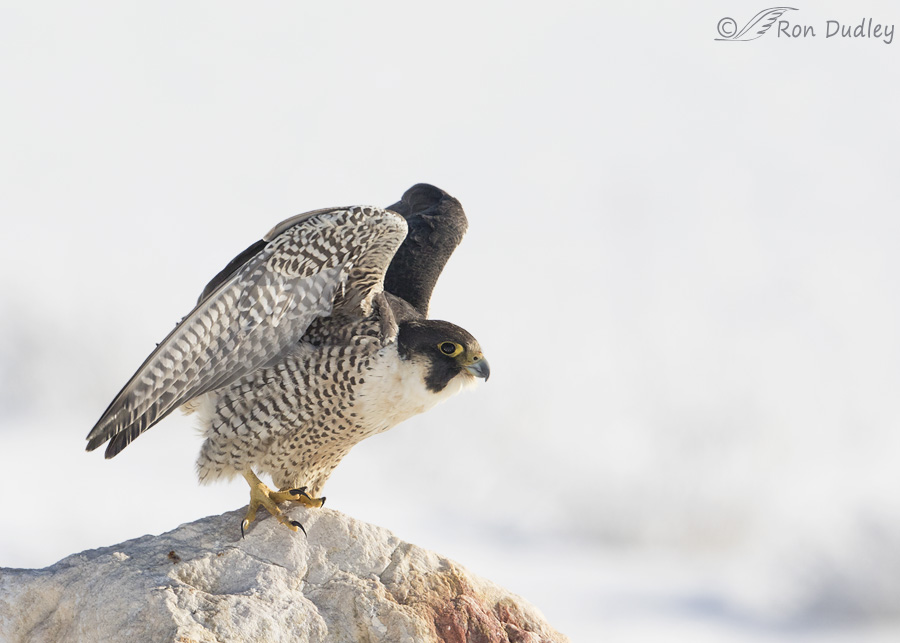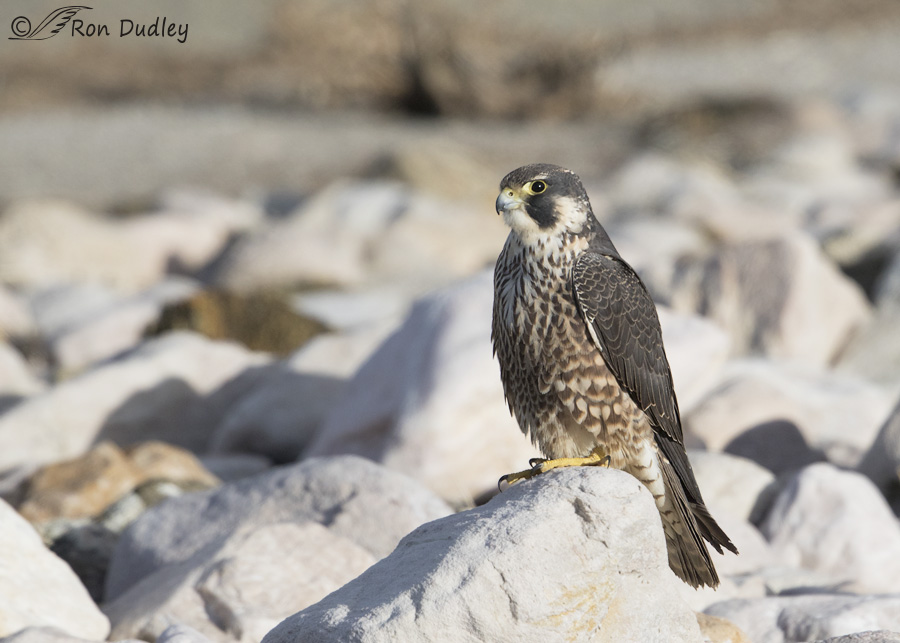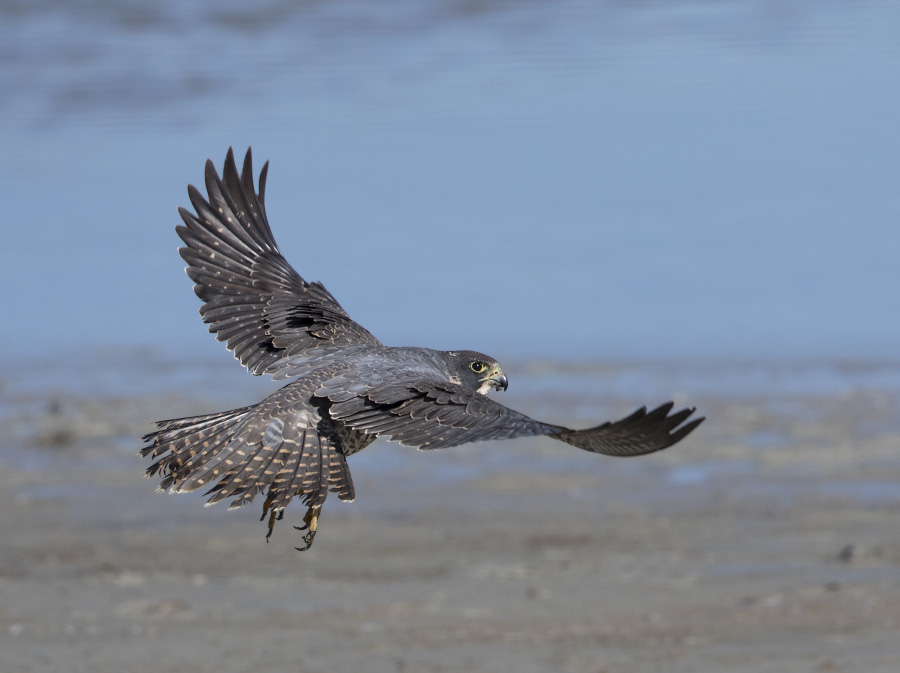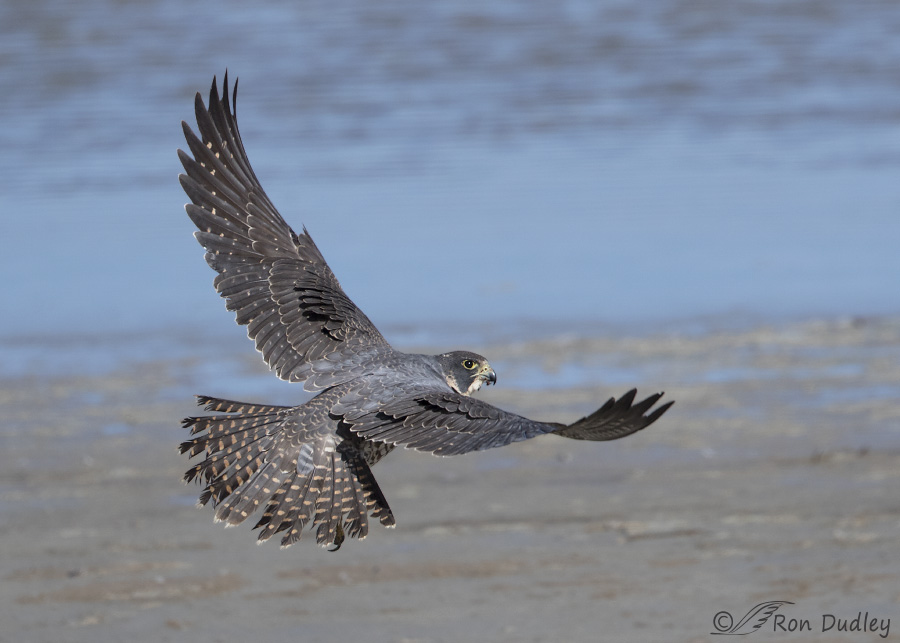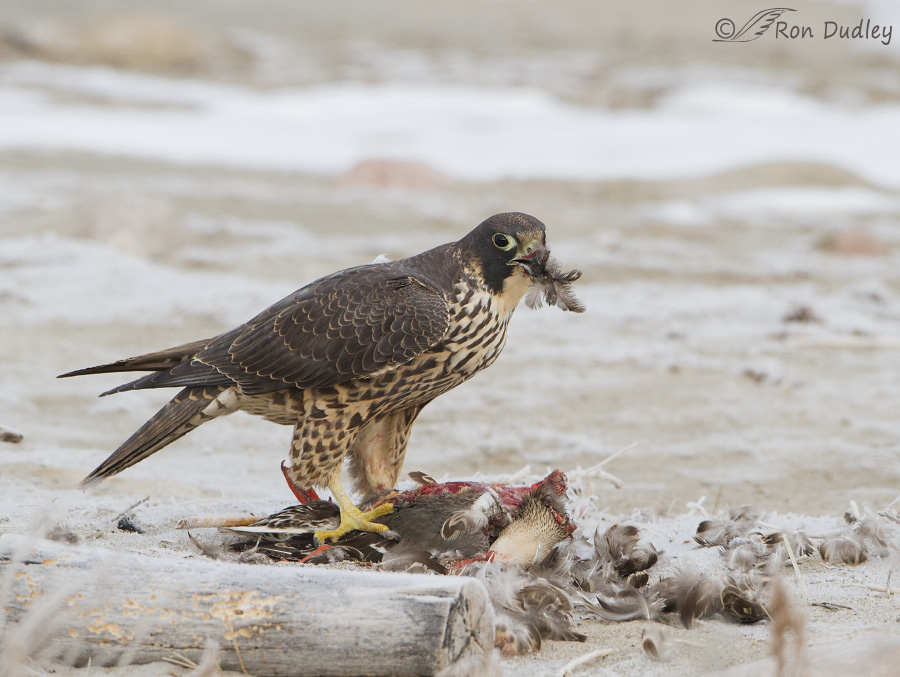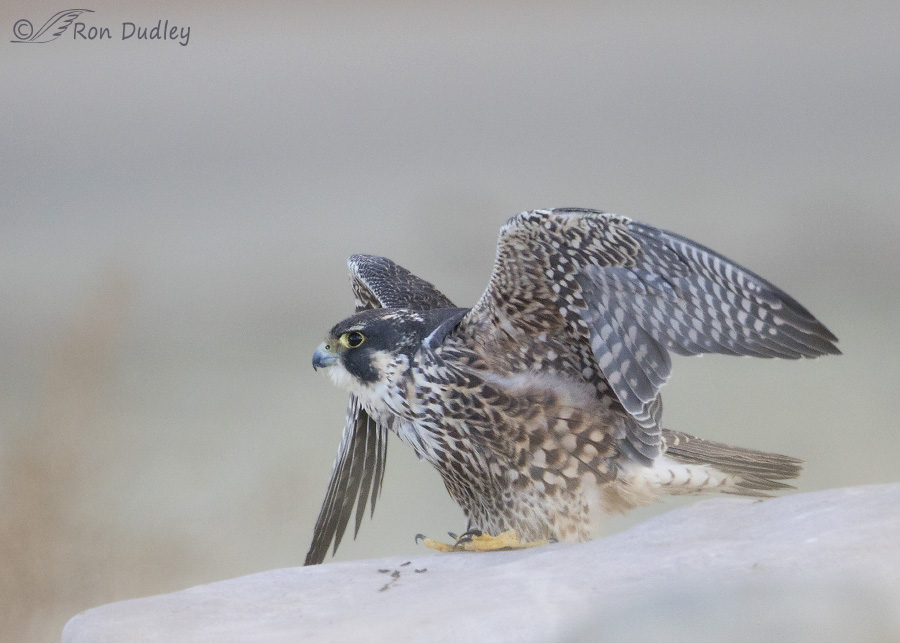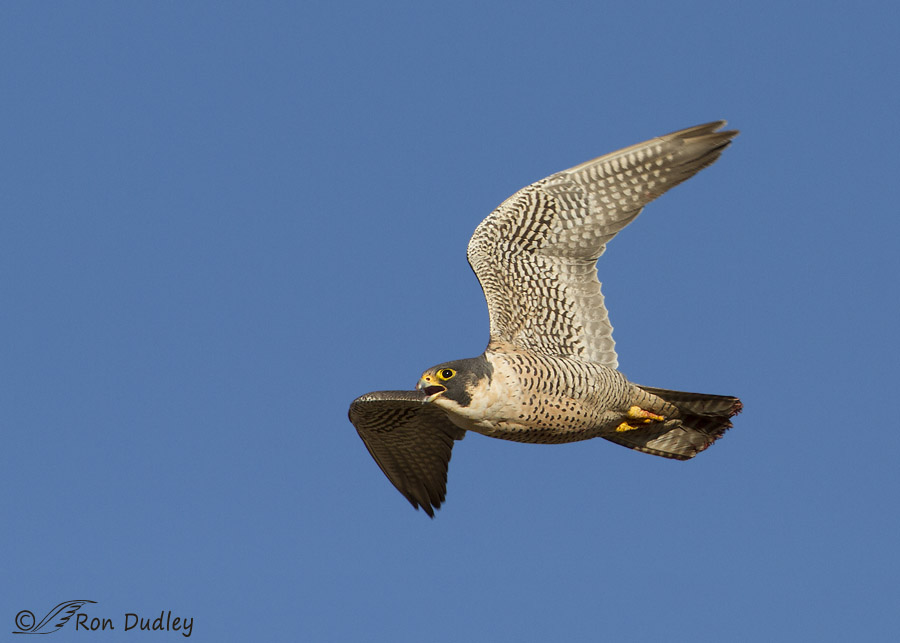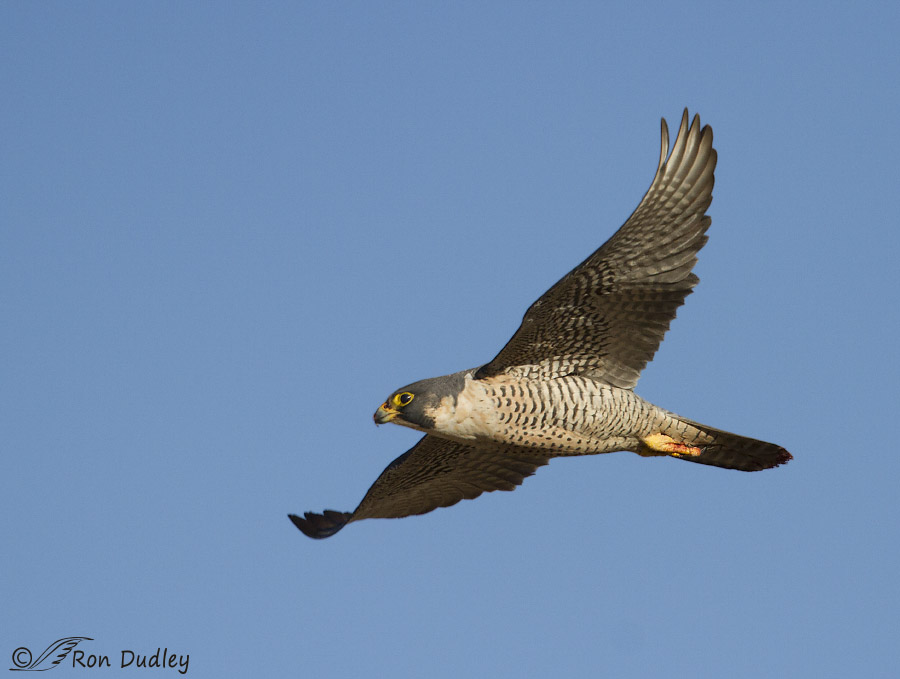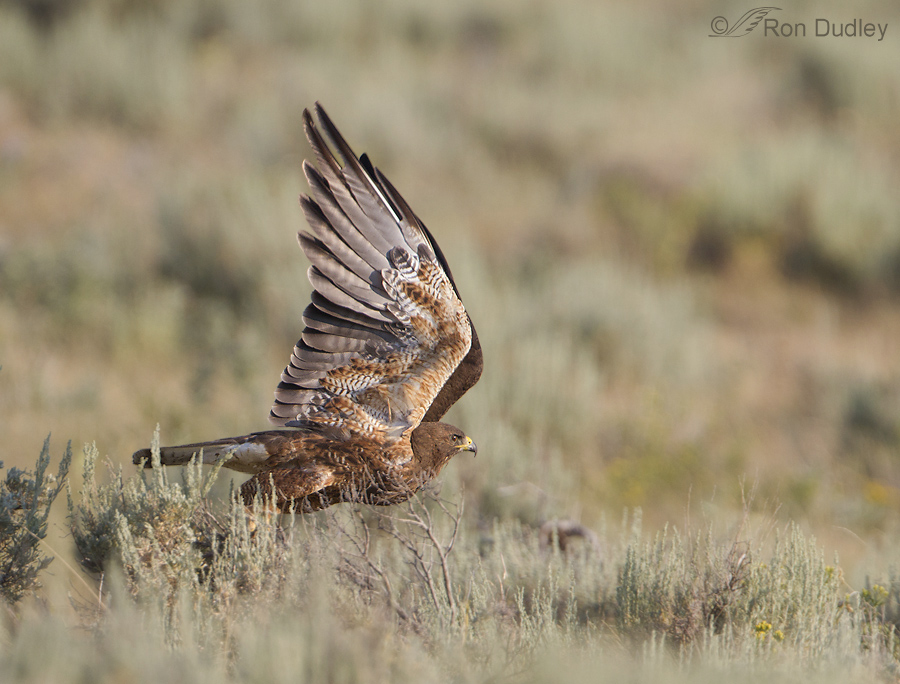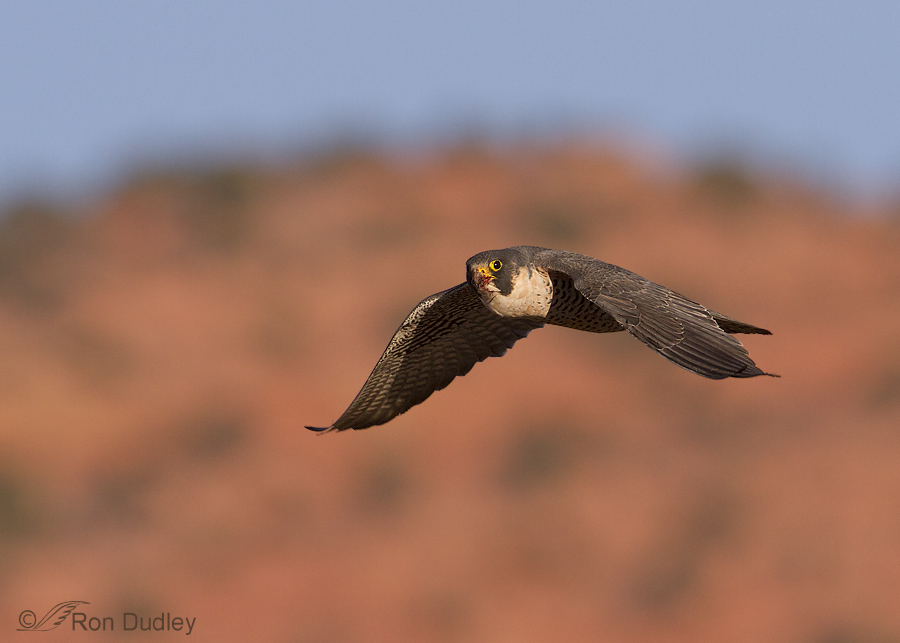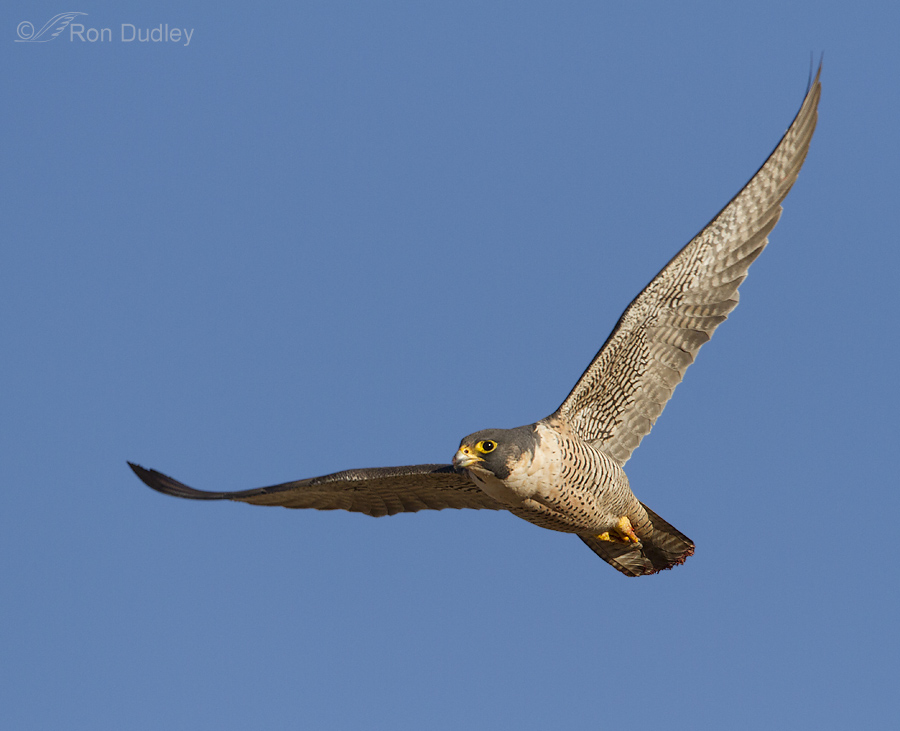Tag: peregrine falcon
A Peregrine Falcon And A Salute To Bob Walters
Peregrine Falcon – A Juvenile Transitioning Into Adult Plumage?
Peregrine Falcon Along The Antelope Island Causeway Yesterday Morning
Juvenile Peregrine Falcon (plus a look at the falcon “nostril cone”)
I’ve seen a fair number of Peregrine and Prairie Falcons on Antelope Island this winter but this is the only one that hasn’t proven elusive.
Peregrine Falcon On A Duck Kill
Juvenile Peregrine Falcon Along The Antelope Island Causeway
Peregrine Falcon On Prey And In Flight
Peregrine Falcon In Flight After Dining On Duck
A Potpourri Of Raptors
Peregrine Falcon In Flight Against Southern Utah’s Famous Red Rocks
A Surprise Peregrine Falcon And My Resulting Buck Fever
An Interesting Observation About Falcon Behavior
I’ve noticed an apparent behavioral quirk in some of the falcon species I’ve photographed and it’s tweaked my curiosity a bit. I’ve seen it most often in Prairie Falcons but that’s most likely because I get more opportunities with that species than I do any other of the large falcons. More often than not the Prairie Falcon holds its wings up or out (or both) for a few moments before it takes off. Sometimes the posture is maintained for quite a while. This is one of the better shots I have of it. Most of the photos to follow have reduced image quality but I include them to document the behavior. This bird held the posture for so long that I filled my buffer twice before it actually took off. Most often I’ve seen it prior to take-off from an elevated perch like this one but it also happens occasionally when they take off from the ground. Another Prairie Falcon showing the posture. I don’t see it nearly as often with the American Kestrel as I do with larger falcons. Perhaps that has to do with the relative ease of take-off for this diminutive falcon. I get few opportunities with Merlins but I’ve noticed it occasionally with this species also. I’m not sure if Peregrine Falcons do it. Usually when I’ve been close enough to photograph peregrines they’ve been on prey on the ground and they may be less likely to show the behavior when taking off from a…
Good News Regarding The Escaped Peregrine Falcon and American Kestrel
Recently I’ve photographed and posted about two escaped falconry birds – a female American Kestrel and a Peregrine Falcon. Both were flying free with attached jesses and/or anklets in the vicinity of Antelope Island. Both were reported to wildlife authorities and to the falconry community but each bird has been a challenge to recapture for a variety of reasons – among them the difficulty of getting proper permission for the licensed trapper to attempt the recapture of the kestrel in a state park. There were lots of hoops to jump through. It is very likely, for a variety of reasons, that both of these birds were originally captured illegally by “wannabe” falconers and not by anyone in the organized and licensed falconry community. Two days after we found the kestrel we met the licensed trapper out on the island to point out the area where the bird was hanging out and to try to find her, which we never did. But yesterday morning we spotted the female Kestrel once again, in the very same area where we found her before. She was far off but when she scratched her face one of the jesses became obvious, as you can see in this photo. I immediately called the trapper to report that the bird was in the area again and she was enthusiastic about making the attempt but as far as she knew, permissions from the state still hadn’t been obtained. A little background before I get to the good news. When Mark Runnels (master falconer from Oklahoma) saw my first post on the female kestrel,…
Yet Another Escaped Falconry Bird – This Time A Female American Kestrel
Yesterday morning I spotted this female American Kestrel perched on a far-off rock to the west on Antelope Island. She was much too far away for decent photographs (as is obvious from the mediocre quality of these first five photos) but when I see raptors at most any distance it’s my practice to “scope them out” through my lens so I can ID them and look for anything unusual or interesting. I took a couple of shots for documentary purposes but at first I didn’t notice anything noteworthy about her except for the keratin flaking off of her beak. But then she scratched her face with her foot. Jesses! Those damned jesses again. In this shot you can see anklets above both feet and the jess on the left leg. She perched and preened on the rock for quite a while and a few minutes later she scratched with her other foot which provided a good look at the jess on the right ankle. I’m including this shot for a look at her right side, in the unlikely event that some local falconer may recognize her. I hung around for a long time in the hopes of catching her at take-off for a better look at both jesses and anklets. As luck would have it, when it happened they were both in shade and I lost focus on the bird but the photo still provides a decent look at the jesses. I’m deeply troubled by this event and I’ll provide a little background as…


